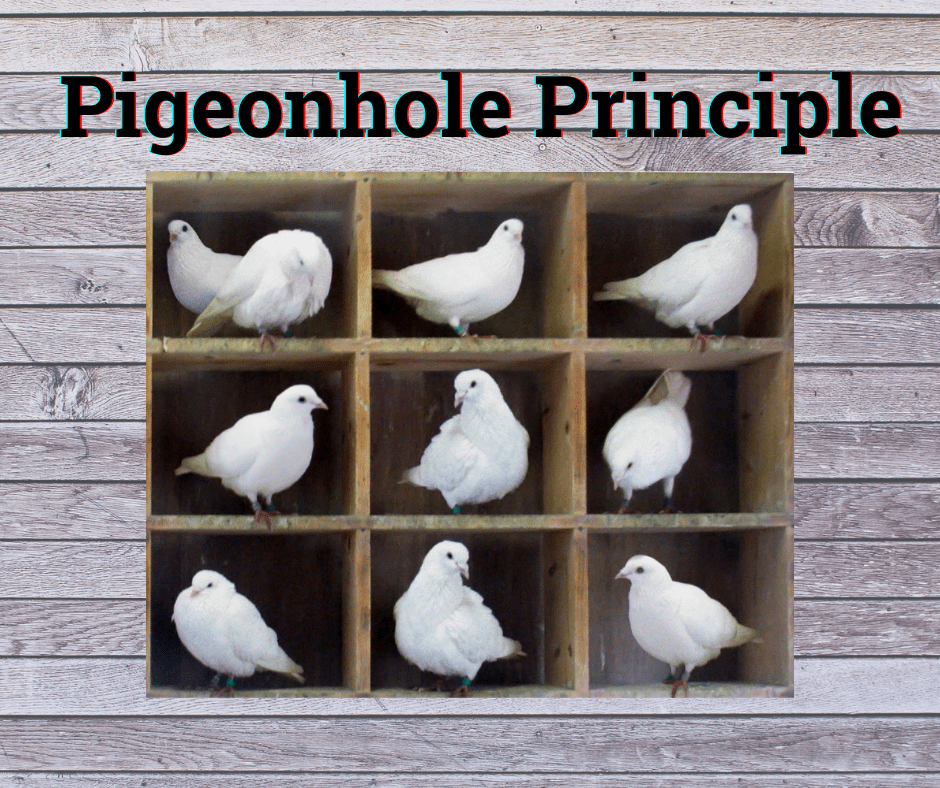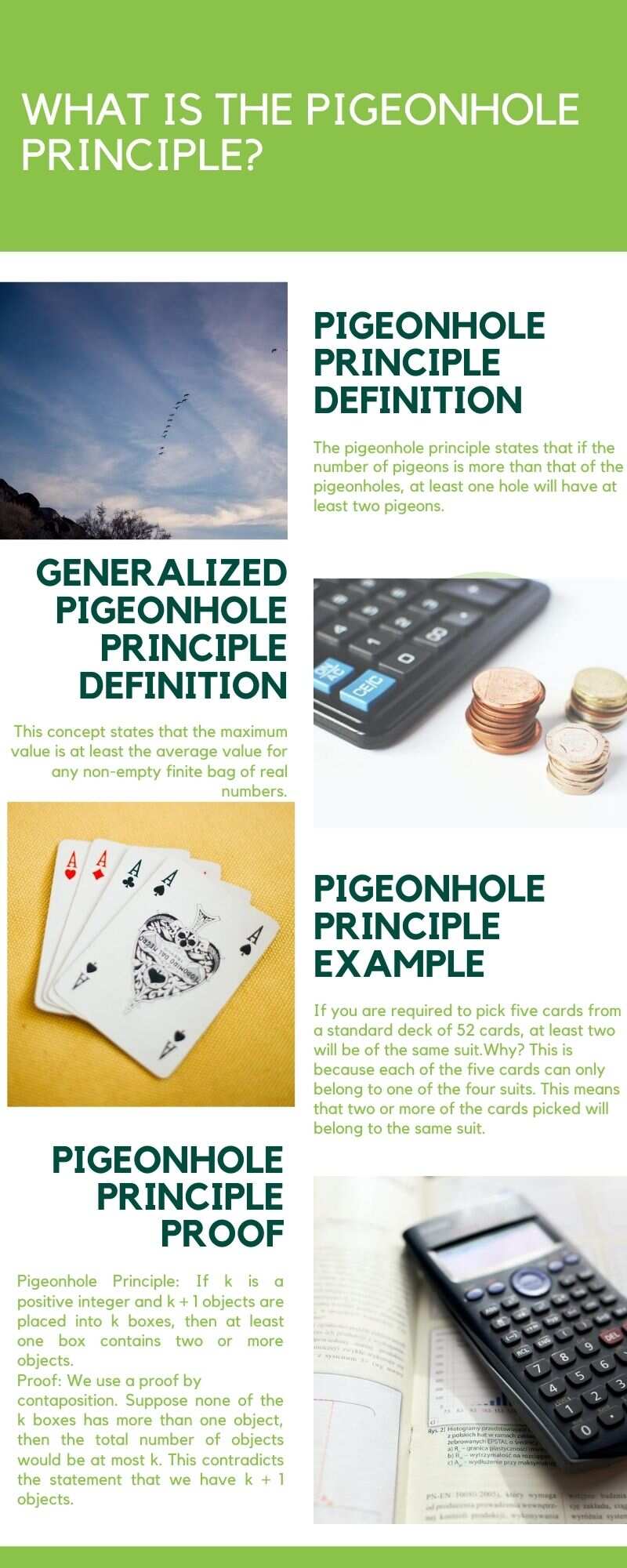Understanding The Definition Of Pigeonhole: A Comprehensive Guide
The term "pigeonhole" often evokes images of small compartments or boxes, but its implications extend far beyond the literal interpretation. In various fields, including mathematics, psychology, and everyday life, the definition of pigeonhole serves as a metaphor for categorization and limitation. The concept highlights how individuals, objects, or ideas can be neatly classified into distinct categories, often leading to oversimplification. This article seeks to unravel the intricacies of the term, exploring its applications and the nuanced meanings that come with it.
Moreover, the pigeonhole principle, a mathematical concept, showcases how if more items are placed into fewer containers, at least one container must hold more than one item. This principle, while seemingly straightforward, has profound implications in probability theory and combinatorics. Understanding the definition of pigeonhole in this context can deepen one’s appreciation for the complexities of categorization in both mathematical and real-world scenarios.
As we delve deeper into the definition of pigeonhole, we will examine its historical roots, practical applications, and the psychological aspects that influence our tendency to categorize. Whether you are a student, a professional, or simply curious about the world around you, grasping the concept of pigeonholing can enhance your understanding of classification systems and their impact on decision-making processes.
What is the Definition of Pigeonhole?
The definition of pigeonhole encompasses various interpretations depending on the context. Broadly, it refers to the act of categorizing or confining individuals or ideas into specific boxes or compartments. In essence, pigeonholing simplifies complexity, often resulting in generalizations that may not accurately reflect the full scope of the subject at hand.
How Did the Term 'Pigeonhole' Originate?
The term "pigeonhole" has its roots in the 19th century, deriving from the practice of keeping pigeons in small compartments known as pigeonholes. These compartments provided a way to organize and manage birds, but the term soon evolved to describe the act of categorizing people or ideas. The metaphorical use of pigeonholes emphasizes the limitations that come with labeling individuals, often leading to misunderstandings and preconceived notions.
What is the Pigeonhole Principle?
The pigeonhole principle is a fundamental concept in combinatorial mathematics. It states that if you have more items than containers, at least one container must hold more than one item. This principle has numerous applications, from proving the existence of certain mathematical properties to solving real-world problems. For example:
- In a group of 13 people, at least two must share a birth month, as there are only 12 months in a year.
- If a drawer contains 10 pairs of socks, at least one pair must be matched if you randomly select 11 socks.
Why is Pigeonholing Problematic?
Pigeonholing can lead to various issues, particularly in social and psychological contexts. By categorizing people into specific groups, we risk oversimplifying their identities and experiences. This can create harmful stereotypes and prevent individuals from being seen as multifaceted beings. Some of the problematic aspects of pigeonholing include:
- Reinforcement of stereotypes
- Loss of individuality
- Limited understanding of complexity
How Does Pigeonholing Affect Decision Making?
When individuals pigeonhole themselves or others, it can significantly impact decision-making processes. By relying on preconceived notions, we may overlook valuable information or insights that contradict our established categories. This can lead to poor judgments in various areas, including:
- Hiring practices
- Social interactions
- Policy-making
What Are Some Examples of Pigeonholing in Everyday Life?
Pigeonholing can manifest in numerous ways in our daily lives. Here are a few examples:
- Assuming someone is a certain way based on their appearance or background.
- Labeling individuals according to their job titles or roles without considering their unique contributions.
- Making snap judgments about someone's interests or abilities based on limited information.
How Can We Avoid Pigeonholing?
To foster a more inclusive and understanding environment, it is essential to recognize the dangers of pigeonholing and actively work to avoid it. Here are some strategies to consider:
- Practice empathy by seeking to understand others' experiences and perspectives.
- Challenge your assumptions and be open to new information.
- Engage in conversations that promote dialogue rather than division.
What Can We Learn from the Definition of Pigeonhole?
Understanding the definition of pigeonhole allows us to recognize the limitations of categorization. It emphasizes the importance of viewing individuals and ideas as complex entities rather than mere labels. By embracing the richness of diversity and complexity, we can promote a more inclusive society that values unique contributions and perspectives.
Conclusion: Embracing Complexity Beyond the Pigeonhole Definition
In conclusion, the definition of pigeonhole serves as a reminder of the dangers of oversimplification in our understanding of the world. Whether in mathematics or human interactions, recognizing the limitations of categorization can lead to more profound insights and connections. By striving to see beyond the pigeonholes we create, we open ourselves to a richer, more nuanced understanding of the people and ideas that shape our lives.
Unveiling The Family Of Richard Gere: How Many Children Does He Have?
Exploring The Roots: The Parents Of Bob Marley
Unveiling The Legends: The World Of ESPN Sportscasters



ncG1vNJzZmiqn5i4o77InZ6emqKqtq%2B%2FjaipoGedmrGqr8ClnZqbmaG2tbXErKavnaKstaa4zJ6baJyVm7avtdOipqdln5t6sbXGnqanoJ%2Bhsm%2B006aj